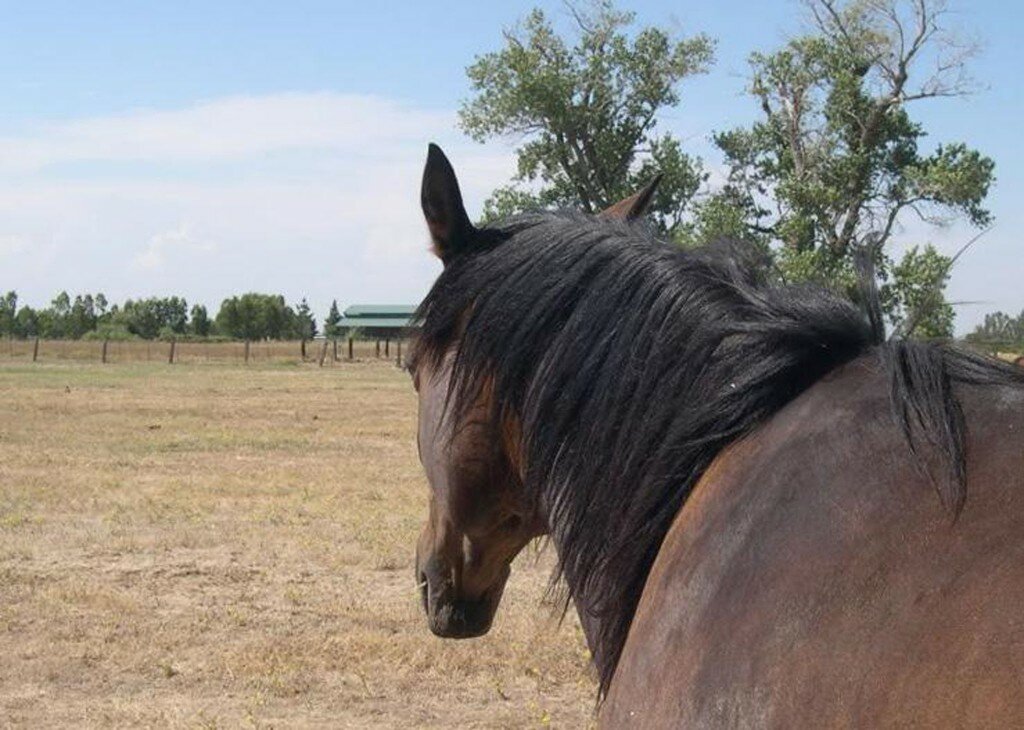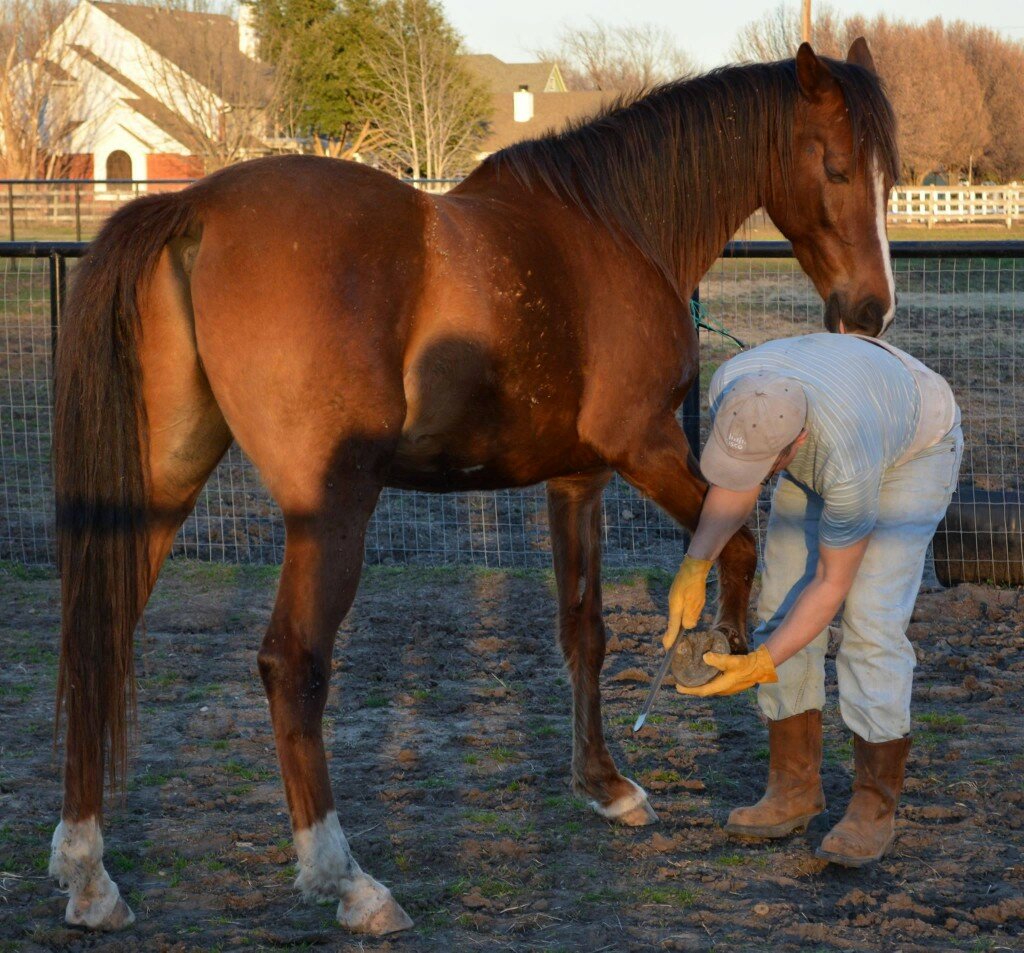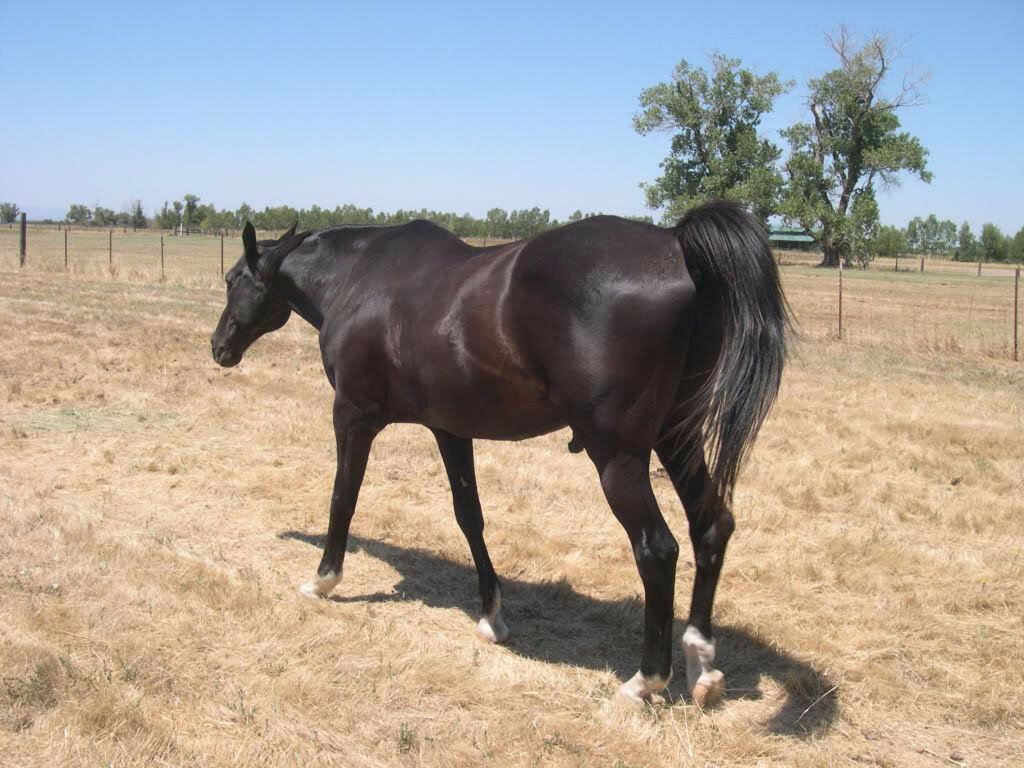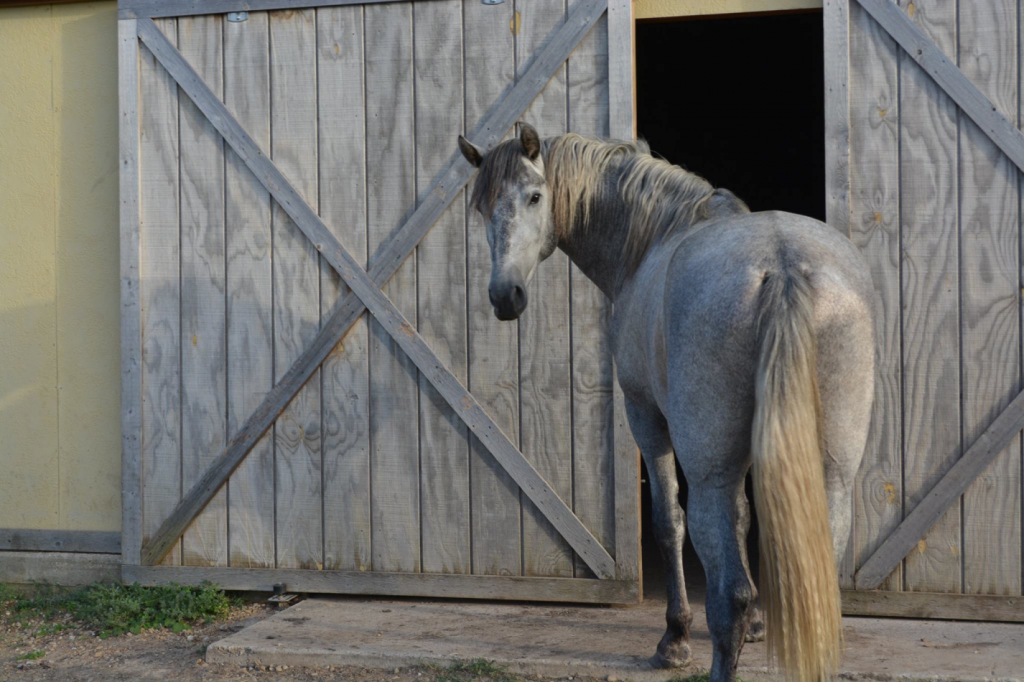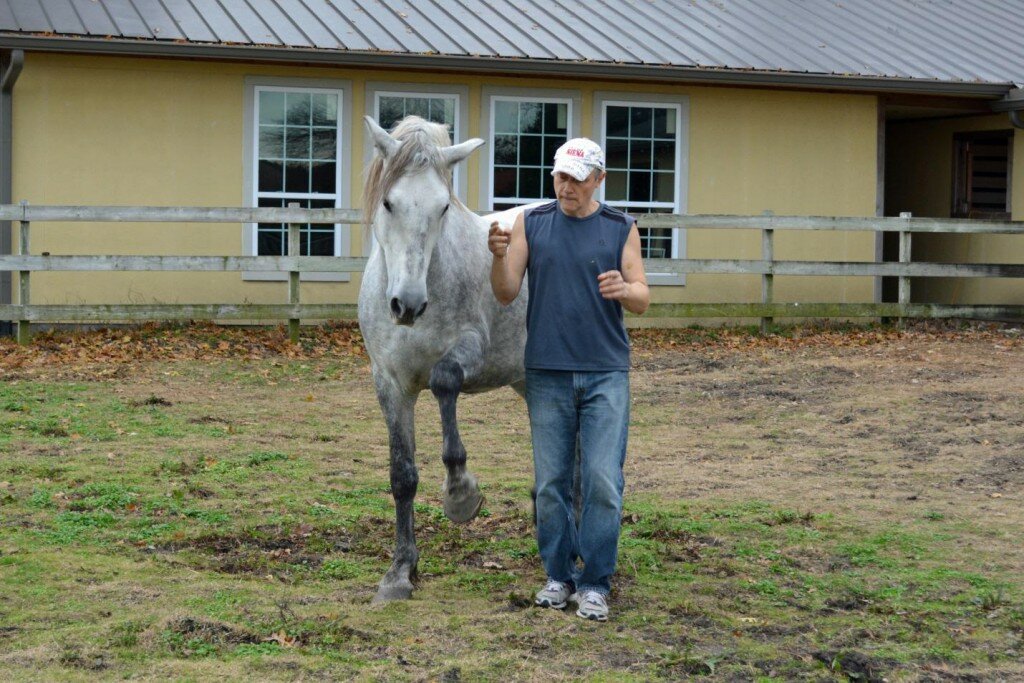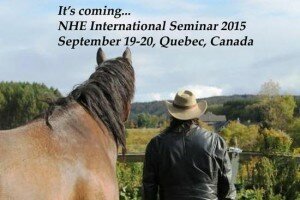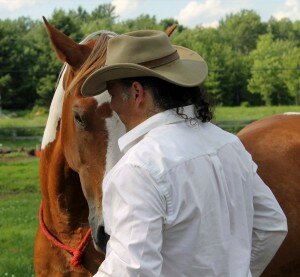Donna Condrey-Miller: Nevzorov Haute Ecole teaches and directs us to approach a horse as a sentient, intelligent being who does not owe us anything. We enter the relationship with the horse upon a level playing field where horse and human will make requests of each other and each has the free choice* to respond by agreement or disagreement as each sees fit given the circumstances of the meeting and the needs and feelings of each in that moment. Our interest is in a freely cooperative interactive friendship.
The principles of NHE maintain that the horse retains his right to say no to us in trust of our honorable acceptance of such a response. In other words, when he says no, we will not continue to badger him with the intent of making him feel uncomfortable or fearful until he resigns himself to saying yes.
Edward Pershwitz: In my mind one’s ability to say “no” is an absolute prerequisite to one’s willingness to say “yes.” If the horse is merely compliant and the human is convinced that the horse is saying “yes” then monumental effort can be expended in the hopes to achieve harmony only to widen the gap and inflict more damage on the relationship. That is because all that effort is spent within the framework that ultimately reinforces the lack of the horse’s freedom of choice.
D: In non-NHE approaches, a “no” answer from the horse may only signal the human to pull out the techniques of coercion or force. Subtle or gross, he or she keeps after the horse until he says yes. In our view that “yes” is not a true “yes”, but one of resignation or surrender to feel relief from the pressure/discomfort/pain/fear of the coercion.
Any horse who has been subjected to that kind of training may give up even trying to say no. He develops a coping strategy of always saying yes to reduce the risk of punishment or pain.
When we come to NHE from training disciplines that have established a false “yes” response from the horse we have to be very careful. The horse may not yet be clear that he can express himself freely now. The conditioning to say “yes” only because saying “no” usually means a greater discomfort may run very deep. Not realizing to what degree it affects the horse, or not recognizing the first subtle attempts to say “no” may, however unwittingly, reinforce the false “yes”.
E:The horse saying “no” may be disconcerting to a loving human as it may be perceived as a sign of rejection. In reality it needs to be celebrated as the starting point of a relationship worth having. One of the biggest challenges of the early stages of relationship is actually getting the horse to start saying “no.” It’s very important to understand that this is the beginning of a healing process and the beginning of communication that simply didn’t exist before. The horse is starting to realize that he can have an opinion that matters and a degree of freedom to express it.
Counterintuitive as it may sound, the opposite is often a much stronger reason for concern. If the horse keeps saying “yes,” especially early on, the human must keep in mind that his “yes” may not be a “yes” at all. For horses that have a history of being physically or psychologically dominated “yes” may not have ever been a free “yes”. In fact, in most cases it hasn’t. “Yes” out of helplessness, “yes” out of futility of any attempts to be considered or even heard isn’t really a “yes.” As you said, it’s a coping mechanism to avoid punishment for disobedience.
D: Before even getting into any formal NHE lessons we can easily explore the communication dynamics in our daily management activities of feeding, grooming, mucking the paddock, hoof care, etc. All would allow the horse opportunities to express his opinion.
At first, we might think we already do give the horse the freedom to choose and to be heard. However, our own conditioning to be in control of the horse and to have respect from him may be so deep that we don’t even notice it. Add to that that we have good intentions for the horse, or are trying to meet obligations of care, so we don’t leave the horse much room to maneuver on his own.
E:Exactly. Here’s an example: It’s really hot and your horse is all sweaty, itchy and apparently miserable. You show up with a hose to give him a shower, but instead of walking up to you he slowly moves away to the far side of the paddock and starts gazing away.
“Okay,” you think, “you just didn’t get it, let me show you it’s just a shower, it’s going to feel great.” So you go to get him and he follows you back hesitantly. You start the water but he, again, tries to walk away.
“Oh, come on,” you think, “look, it’s not a big deal, let me just do it and you’ll realize that you actually enjoy it.” So you put your arm around his chest to hold him back but he doesn’t seem to notice and walks right through it.
“Augh,” you think, “you’re just being difficult. Don’t you realize I’m doing this for your own good?” So you go grab a halter, bring him back again and hold him while you are hosing him off. He doesn’t argue. Once you are done and the halter is removed he turns around and leaves.
“Okay,” you think, “you’ll feel so much better now. See – it wasn’t so bad, was it?”
What just happened is the horse gave you three loud and clear “nos” in a row, along with the display of habitual coerced compliance that you beautifully reinforced. You showed him that you are not listening and that you will do whatever you want regardless of how he feels about it and that you will keep insisting until he complies. For him, if he doesn’t feel particularly threatened by your actions, the easiest way to get rid of the pressure is letting you do your thing. He also got yet another confirmation that trying to talk to you is pointless.
“No” simply means “no.” It doesn’t mean “try again.” It doesn’t mean that the horse just doesn’t get it, or that he’ll learn it’s not a big deal, or that he’s being difficult or naughty, or that he will be okay with it in the end. If this sounds like quotes from sex offender education it does for a good reason. There are a lot of parallels when one is forcing oneself on another.
“No” means the freedom of choice for any reason or no reason whatsoever. It means that if he doesn’t want to stay with you he’s not going to be chased. It means that if he doesn’t want to be touched (groomed, hosed off, etc.) he won’t be. It means that if he’s not engaged in whatever you might think is fun he doesn’t need to participate. It means that his own understanding of what’s better for him at the moment is respected. And if he doesn’t have this essential right then he’s never going to come to you because he’s deprived of the very essence of what it takes to connect, to make friends, to build trust. It also means that you can make him do what you want but you cannot make him like you. That he can only do on his own accord and not because you have a notion of what he’s supposed and not supposed to do or feel in response to your actions, care, love, or tokens of affection.
D: Something very interesting happens to the “yes” response when the “no” is respected. This applies to the character of the human “yes”, too. If we preoccupy ourselves with the horse always ending up saying yes, it is very likely that we will be spending a lot of energy on saying no to him. As your example illustrates, we will be focused on correcting him, on suppressing his first impressions or expressions, and manipulating him, effectively missing or worse, ignoring, valuable information from the horse.
When “no” and “yes” may be freely given each answer offers possibility of new discovery. The human who honestly hears the horse say “no” in effect says “yes” to the horse at the same time. Yes, I hear you. Yes, that is interesting that I asked you to do x and you showed me y. Let me explore that with you. What can you tell me?
The horse who can say “no” becomes interested in saying “yes” because he knows he can walk away at any time.
Accepting the horse saying no acknowledges his understanding of his own body, it respects his privacy and physical security, and it recognizes and accepts the validity of his preference, as long as it is safe for him and others under the circumstances.
E:Speaking of safety, recognizing the horse’s right to say no is directly related to how safe it is to be around the horse. In the state of true friendship humans and horses alike don’t look for ways to hurt each other or get an “upper hand.” A usual part of typical horsemanship education is learning safe and unsafe areas around the horse. The assumption is that if you happen to be in the unsafe area the horse is likely to take this opportunity to hurt you. Moreover, the horse is also specifically taught, typically by punishment, to not assume a position around his handler that would be considered unsafe. For example a horse moving his butt toward a human with, or without, any intention to kick will likely be punished. The notion that the horses butt doesn’t fire kicks for no reason is typically dismissed in favor of a variation on the theme that the horse is an animal and no one knows what he has on his mind.
An interesting question to ask is how you know what a human with a hammer in his hand has on his mind. And why, then, do we not assume that he will hit you with the hammer if you happen to be within a hitting distance. Why is it safe (barring freak accidents) to be next to a human equipped to hurt you but not to a horse? Well, a simple answer is that the human is free, friendly, and has no reason for aggression. Take that freedom away, force the human into the corner, create an unsafe, threatening situation, and he will probably hurt you given an opportunity. This connects right back to the horse’s right to say no. When we take that right away we are running a serious risk of coerced compliance suddenly turning into aggression, and have to take extra precautions to prevent it – precautions that also have a side effect of creating more tension and more mistrust.
Accidents can happen, of course. Horses are large, very powerful, have hard feet, etc. They can get frightened and move very quickly. Anyone who comes into a close contact with them needs to be constantly aware of the exact position of their own and the horse’s bodies, deeply understand horse behavior, and have the ability to foresee dangerous situations. By no means am I suggesting that sensible safety measures be ignored or relaxed. But what I am suggesting is that as long as he is free and can say no at any time without running any risk of disapproval or reprimand and (importantly) he knows it he is no more dangerous than a person with a hammer. A hammer head accidentally flying off the handle can kill you too.
D: That’s a good point. Generally, the conventional non-NHE rules of engagement are one-sided and geared toward our control over the horse in service to our own use and benefit. In that case we are always expecting an uprising or resistance. NHE has shown that the horse is very capable of controlling himself and able to understand how to interact thoughtfully with humans. Being free to say no and have it respected is essential to that.
In some cases, in the novice NHE student’s enthusiasm to give freedom and to feel free cooperation from the horse, he or she may exhibit impatience and explore exercises and lessons using reward-only conditioning techniques, misunderstanding the heart of a truly free “yes” or “no” response.
The School is not lenient on this matter and students will be directed to back up. It is essential to understand when the horse is saying “no” and to recognize whether the horse knows or doesn’t know he can say “no” for the mutual relationship to develop.
E: School lessons should never be attempted until and unless the horse says “yes” to them. Anything else immediately translates into forced compliance, which is a dead end for any relationship. It therefore follows that both making sure that the horse knows he can say “no” and that the human can recognize a “no” however subtle it may be is foundational to any future development.
The NHE discouragement from starting the lessons before the relationship is ripe enough and both the human and the horse are ready for free, willing and mutually enjoyable cooperation may be easily perceived as “holding back” or insufficient appreciation of one’s progress. This simply only means that NHE offers a degree of protection from premature actions that often lead to a slippery slope back into the state of forced compliance, which sadly is a common and quite stable state for even most ardent horse lovers hoping to achieve connection with their horses.
D: Honoring the horse’s right to say no is not abandoning him to have no feedback from us, it is not a pass to neglect hoof care or medical care because he says no, and it doesn’t mean we stop asking him to do things or to participate with us. When the horse says no it is part of a process of communicating within the long-term relationship. “No” may signal the end of a specific conversation, but it doesn’t mean the end of growth in the relationship.
E: It may, and in most cases will, take time. It will require a lot of patience and a lot of quiet, thoughtful observation. Just like a human, the horse needs to invest a lot in you to open up. Embracing his freedom to say “no” and be heard is only the beginning of a long journey toward building a partnership where being together is a genuinely free choice, a connection that is free of coercion and manipulation, a relationship that is liberating and empowering rather than possessive. There will be many, many more steps along this path, some easier, some harder. But they will all share the same quality – both human and horse will create every element of this new reality together freely and willingly.
* We recognize that just about any horse with whom we will engage has had his initial choice as whether to even be with humans removed by the lineage of domestication or recent capture from the wild. However, NHE acknowledges these horses’ great dependence on us. We are innovating horse keeping (caretaking) paradigms that expand physical freedom as much as is practical and safe within the current state of human dominance and the individual caretaker’s means. The primary focus of the School is to allow the horse psychological freedom under all variations of living environments and within the human horse relationship.






